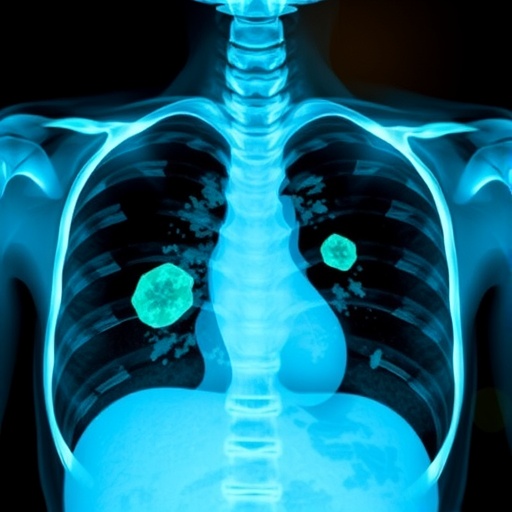In a groundbreaking advancement at the intersection of forensic science and analytical chemistry, researchers have unveiled a highly sensitive and innovative method for the chiral analysis of etomidate and metomidate enantiomers in human hair samples. This novel approach leverages ultra-high-performance liquid chromatography coupled with tandem mass spectrometry (UHPLC-MS/MS) to provide unprecedented insights into the enantiomeric composition of these pharmacologically significant compounds. The implications of this study extend far beyond mere detection, offering a powerful tool for forensic investigations, clinical toxicology, and pharmacokinetic studies.
Etomidate and metomidate are widely recognized as anesthetic agents, each possessing enantiomers—molecules that are mirror images of one another but often exhibit markedly different biological activities and metabolic pathways. Conventional analytical techniques typically measure the total concentration of these compounds without discriminating between enantiomers. However, this lack of stereochemical resolution can obscure nuanced information regarding drug metabolism, effects, and potential misuse. The new UHPLC-MS/MS methodology addresses this challenge head-on, enabling precise quantification and enantiomeric fraction assessment directly from authentic human hair.
Hair as a biological matrix offers a distinct advantage for retrospective drug analysis due to its ability to incorporate and preserve chemical signatures over extended periods. Unlike blood or urine, which provide snapshots of recent exposure, hair encapsulates a historical record of substance intake. This is particularly valuable in forensic and clinical contexts where establishing timelines of drug use is critical. The difficulty has always been in achieving chiral resolution within such complex matrices, but the current research surmounts this barrier by employing an optimized chromatographic separation paired with highly selective mass spectrometric detection.
The study meticulously details the optimization process of chromatographic conditions that ensure baseline separation of etomidate and metomidate enantiomers. Key parameters such as the choice of chiral stationary phases, mobile phase composition, flow rates, and temperature were systematically evaluated to maximize enantiomeric distinction. The authors report that certain proprietary chiral columns dramatically enhanced resolution, enabling the clear differentiation of stereoisomers even at trace concentrations found within hair samples. This development is pivotal because it overcomes a historical bottleneck in chiral drug analysis.
In tandem with chromatographic refinement, the tandem mass spectrometry parameters were fine-tuned to provide exquisite sensitivity and selectivity. By employing multiple reaction monitoring (MRM) modes tailored to each enantiomer’s fragmentation pattern, the method achieves robust signal-to-noise ratios, minimal interference, and reliable quantitation down to picogram levels. This sensitivity is crucial when analyzing hair, where analyte concentrations are inherently low and matrix effects can complicate interpretation.
Another notable aspect of the research is the rigorous validation framework that underscores the method’s analytical performance. The authors present comprehensive data on linearity, limits of detection (LOD), limits of quantitation (LOQ), accuracy, precision, recovery, and matrix effects. The results demonstrate that the UHPLC-MS/MS method exceeds standard forensic toxicology benchmarks, ensuring its suitability for routine casework. Moreover, stability studies affirm the reliability of enantiomeric fraction data over time, a critical consideration for downstream legal and clinical applications.
Applying this validated technique to authentic human hair samples revealed fascinating enantiomeric distributions of etomidate and metomidate. Contrary to the assumption that enantiomeric ratios remain constant, the study found variability reflective of individual metabolic differences, drug formulation, or administration routes. These findings suggest that the enantiomeric fraction could serve as a novel biomarker, enabling differentiation between therapeutic and illicit use, as well as providing clues to the pharmacokinetic fate of each enantiomer within the body.
The forensic ramifications of this work are particularly compelling. The ability to identify and quantify specific enantiomers in hair adds a new dimension to drug testing by enabling more precise interpretation of drug intake histories. This could aid in resolving ambiguities in legal cases involving drug-facilitated crimes, impaired driving, or prolonged substance abuse. Furthermore, the stereochemical insight obtained may assist in distinguishing between enantiomerically pure pharmaceutical preparations and racemic mixtures, which holds significance for regulatory scrutiny and anti-counterfeiting measures.
Clinically, this sophisticated method paves the way for enhanced monitoring of patient adherence, exposure assessment, and personalized medicine approaches. Understanding enantiomeric composition can inform dosing strategies and toxicity evaluations, given that enantiomers often differ in therapeutic efficacy and adverse event profiles. As advances in chiral pharmacology continue, such precise analytical tools become indispensable for aligning clinical practices with molecular pharmacodynamics.
Beyond the immediate substances studied, the employment of UHPLC-MS/MS for chiral hair analysis represents a platform technology with broad applicability. The principles and methodologies outlined here could be adapted to a multitude of other chiral drugs and metabolites, enabling a new frontier in forensic and biomedical investigations. This versatility underscores the transformative potential of combining chromatographic science with mass spectrometry in solving complex analytical challenges.
The research team’s integration of sophisticated analytical chemistry with real-world biological matrices exemplifies the cutting-edge spirit driving contemporary forensic science. Through methodical experimentation, innovation, and validation, they have furnished the scientific community with an authoritative tool capable of elevating the understanding of chiral drug behavior in humans. These advancements are poised to catalyze new studies, expand forensic capabilities, and influence clinical paradigms in the years to come.
Of particular interest is how the enantiomeric fraction data may fuel future pharmacokinetic modeling. By elucidating the stereoselective incorporation of drugs into hair, researchers can refine existing models of drug accumulation and elimination. Such knowledge will enhance the accuracy of interpreting hair analysis results, moving from qualitative detection to quantitative, time-resolved reconstructions of drug history. This could revolutionize the use of hair testing in therapeutic drug monitoring and forensic toxicology alike.
In summary, this pioneering study not only bridges a critical analytical gap regarding etomidate and metomidate enantiomers but also exemplifies the power of UHPLC-MS/MS in chiral forensic analysis using hair. The demonstrated sensitivity, selectivity, and robustness of the approach confer upon it substantial utility across forensic investigations, regulatory scrutiny, and clinical assessments. With growing concerns about drug abuse, contamination, and the need for precise pharmacological monitoring, such advancements arrive at a critical juncture, promising to enhance our capabilities to interrogate substance use with unprecedented resolution and confidence.
As research science ventures deeper into stereochemistry and its biological ramifications, innovations like these set the stage for a future where chiral analysis becomes routine in forensic and clinical laboratories alike. The ability to characterize the subtle nuances in drug enantiomer distribution within human hair not only enriches our scientific understanding but also conveys tangible societal benefits through improved justice, healthcare, and drug policy frameworks. This study heralds a new era of precise, chiral-aware substance analysis that could resonate across multiple disciplines and applications worldwide.
The method’s successful application to human hair, a complex and resilient biological archive, demonstrates the robustness of UHPLC-MS/MS in real-world conditions. Overcoming matrix interferences and variable sample qualities, the approach proved both reliable and reproducible. This lays the groundwork for large-scale population studies that could uncover epidemiological patterns, influence public health initiatives, and inform substance control policies with unprecedented molecular detail.
In conclusion, the authors have unveiled an analytical tour de force that decisively advances the state of chiral forensic analysis. Their work embodies the synthesis of analytical rigor, innovative technology, and practical applicability. As drug analysis and pharmacological sciences increasingly recognize the critical role of stereochemistry, this UHPLC-MS/MS based chiral analysis platform stands ready to lead the charge. It is a shining example of how meticulous scientific endeavor can yield tools that redefine the boundaries of knowledge and impact society profoundly.
Subject of Research:
Chiral analysis of the enantiomers of etomidate and metomidate in human hair samples using UHPLC-MS/MS.
Article Title:
Chiral analysis of etomidate and metomidate enantiomers in hair by UHPLC-MS/MS: application to authentic human hair samples and enantiomeric fraction assessment.
Article References:
Zhang, Z., Wang, X., Lin, M. et al. Chiral analysis of etomidate and metomidate enantiomers in hair by UHPLC-MS/MS: application to authentic human hair samples and enantiomeric fraction assessment. Int J Legal Med (2025). https://doi.org/10.1007/s00414-025-03600-4
Image Credits: AI Generated
Tags: anesthetic agents chiral propertieschiral analysis of etomidate enantiomersclinical toxicology advancementsdrug metabolism and enantiomersenantiomeric composition in pharmacologyforensic science in drug analysishair as a biological matrix for drug testinginnovative methods in forensic investigationspharmacokinetic studies using hair samplesretrospective drug analysis methodsUHPLC-MS/MS techniquesultra-high-performance liquid chromatography





